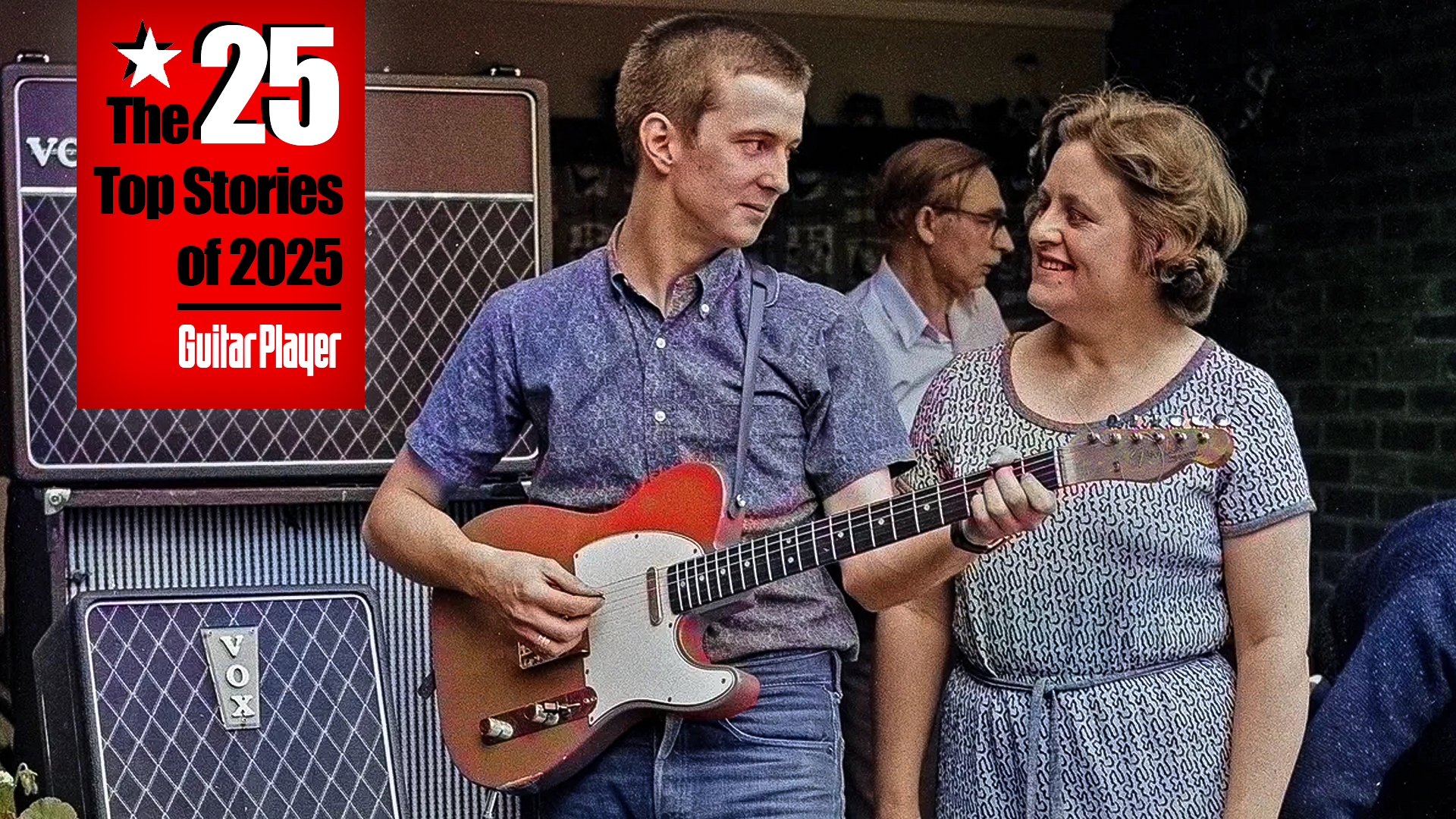Best Telecaster pickups 2025: Expert recommendations for perfecting that unmistakable Tele twang
From traditional tones to modern high-gain options, these should be your go-to pickups to breathe new life into your Telecaster
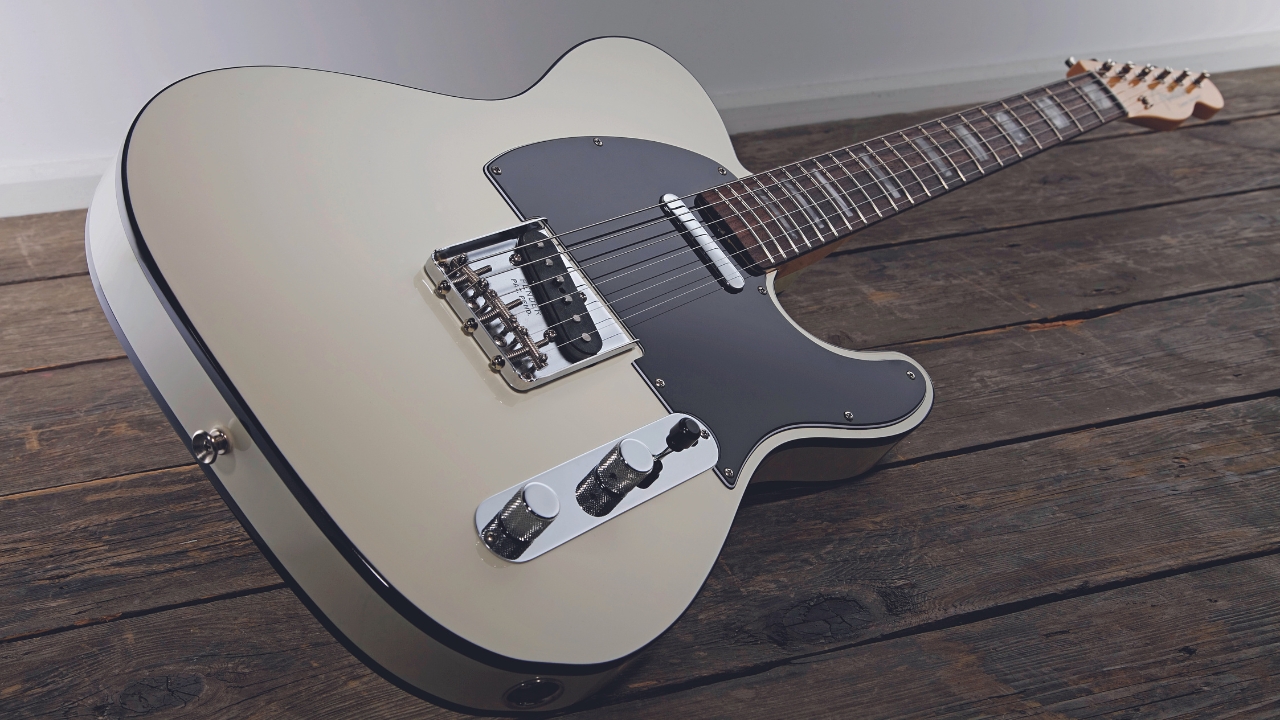
One of the most popular guitars ever made, the Telecaster is an amazingly versatile instrument. The best Telecaster pickups cover a lot of sonic ground, excelling in genres as far and wide as country and pop, right through to hardcore and punk rock. This is due to their combination of a super-bright bridge pickup and dark and warm neck pickup which gives you a lot of scope to craft some awesome guitar tones.
If you want to take your Tele to the next level, upgrading the pickups is one of the best ways to do it. Swapping pickups is a relatively affordable way to refine your tone, and while the process isn’t as tricky as it might seem, a guitar tech can always handle the installation if you are unsure.
Maybe you’ve got an affordable Tele that could use a tonal upgrade, or you’ve splurged on an American-made model but aren’t vibing with the pickups. Or perhaps you just want to dive deeper into the anatomy of your Telecaster’s internals. Either way, upgrading your pickups is worth considering before you list it on Reverb or give up on it completely.
And if you want to get the lowdown on my top pick right away, I've put the Fishman Fluence Greg Koch Gristle Tone pickups at the top of the pile. These have two classic Telecaster voicings which are not only perfect for clean playing, but can also be switched to provide a punchier tone. A truly versatile option.
If you've not thought about changing pickups before, have a look at our FAQs section below which answers lots of common questions by the experts here at Guitar Player. Otherwise, keep scrolling to see the best Tele pickups available right now.
Our top picks
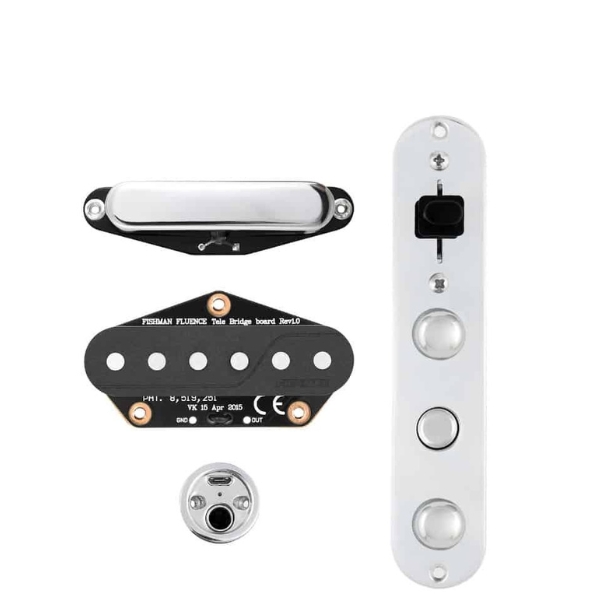
If you want the best Tele pickups overall in our opinion, we love the Fishman Fluence Greg Koch Gristle Tone set. With a simple switch located between the two knobs, you can flick between two distinct voices that essentially give you two Telecasters in one.
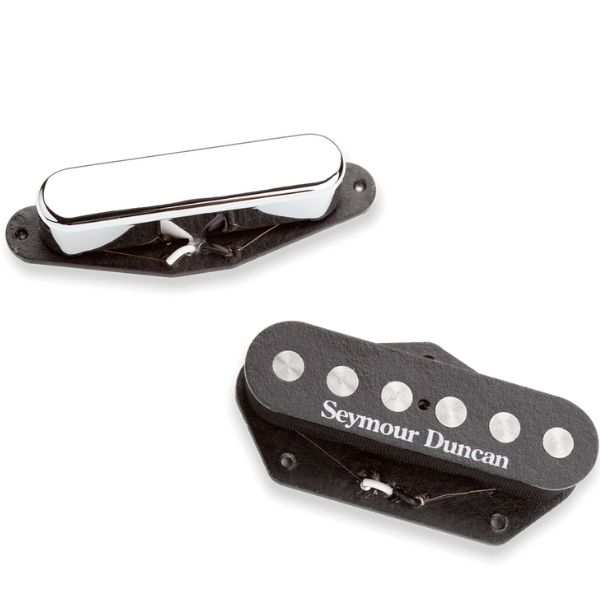
If you want a little more oomph from your Telecaster pickups, the Seymour Duncan Quarter Pound Tele is a popular choice. These overwound pickups deliver a much more punchy and powerful sound akin to that of a humbucker, perfect for adding girth to your tone.
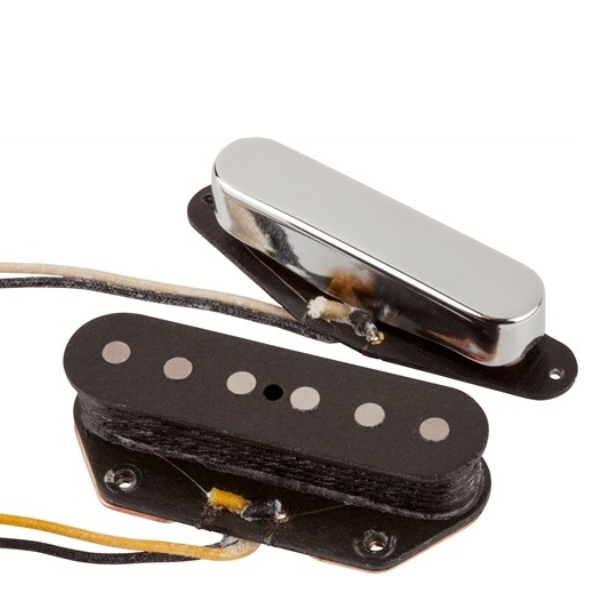
For those with vintage Tele's that want a more original tone, we don't think it comes much better than the Fender Pure Vintage 52 Telecaster set. Packing that classic twang of the bridge pickup with a dark and warm neck sound, these pickups get you the sound of the original Telecaster.
Best overall
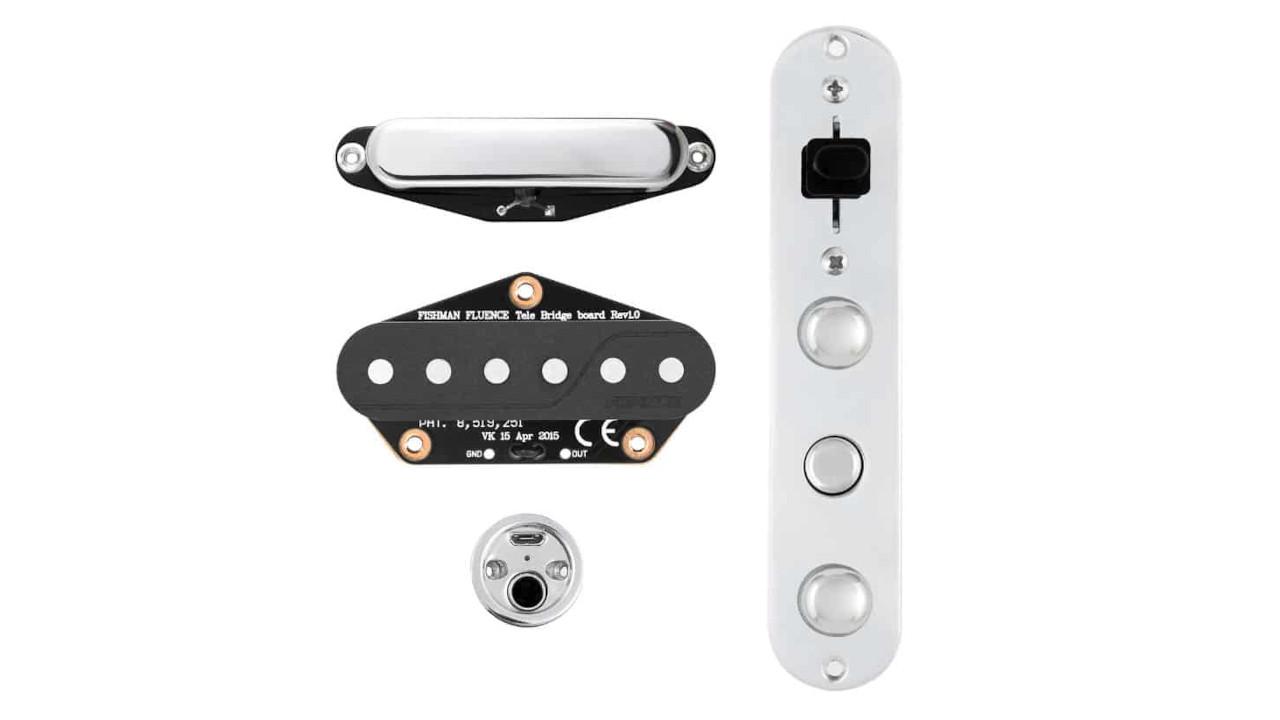
1. Fishman Fluence Greg Koch Gristle Tone pickups
Our expert review:
Specifications
Reasons to buy
Reasons to avoid
✅ Buy if you want a set of versatile pickups: Two distinctive Telecaster voicings give you flexibility when playing.
❌ Avoid if charging is an issue: You'll have to charge these pickups via USB - but you will get around 300 hours of playtime from an hour and a half charge.
Fishman Fluence pickups have been making waves, particularly within metal guitars. However, the Telecaster set they’ve come up with alongside Tele man and six-string acrobat Greg Koch is nothing short of amazing. These pickups provide two distinctive classic Telecaster voicings – one of an early 50s blackguard model and one of a late 50s/early 60s whiteguard.
Voice 1 is lovely and airy – perfect for clean playing and chicken pickin’ away. This is the whiteguard voicing and can easily be changed by pushing the small switch that lies between the control knobs, which will take you to the blackguard voicing. This is a little punchier, more present in the mids and is perfect if you want to push your amp just a little bit harder.
It’s great having access to both styles in one pickup set, plus they’re noiseless, so you won’t ever have to battle with that annoying hum. The only downside is that you’ll have to charge the pickups via mini USB on the jack plate though an hour and half charge will get you around 300 hours play time.
Best modern
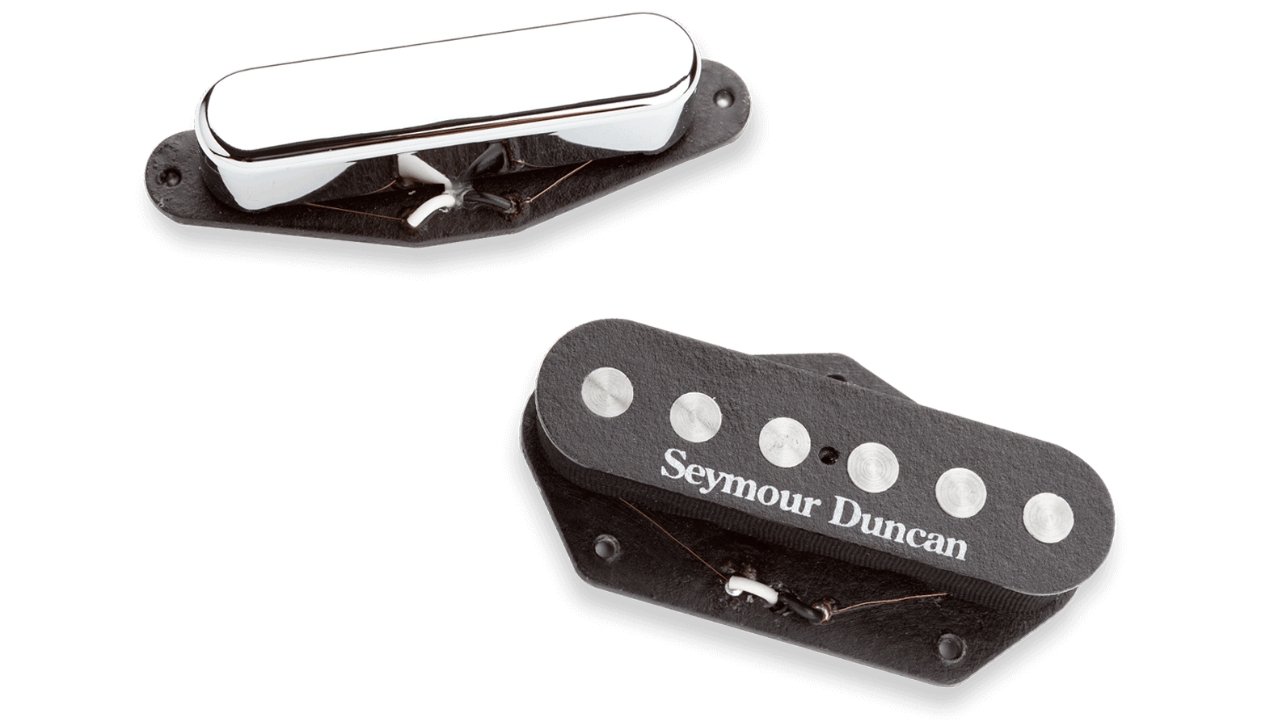
2. Seymour Duncan Quarter Pound Telecaster
Our expert review:
Specifications
Reasons to buy
Reasons to avoid
✅ Buy if you want a classic Tele sound with a bit more power: These pickups offer warm note definition with a punchier edge.
❌ Avoid if rock and metal isn't your style: These pickups suit rock and metal, so if that's not your thing, there are better options on this list.
Ever want a Fender Telecaster pickup that just delivers more? Well, the Quarter Pounder might be the one for you. Seymour Duncan's aim with this was to deliver humbucker style punch and saturation while still keeping it a true single coil pickup.
You still get some of that classic Telecaster bite and twang in the bridge position, but it’s a little more mellowed out. You do still hear a lot of note definition though, as well as a great attack to the notes. The neck pickup is again, classic neck Telecaster sound – but more. It’s warmer, it’s punchier and works incredibly well for solos, especially if you’re using gain. You also still get a superb blend of the two in the middle position with a touch of that quack.
If you’re after some of the best Telecaster pickups for rock, or even metal, then these will do just the trick.
Best vintage
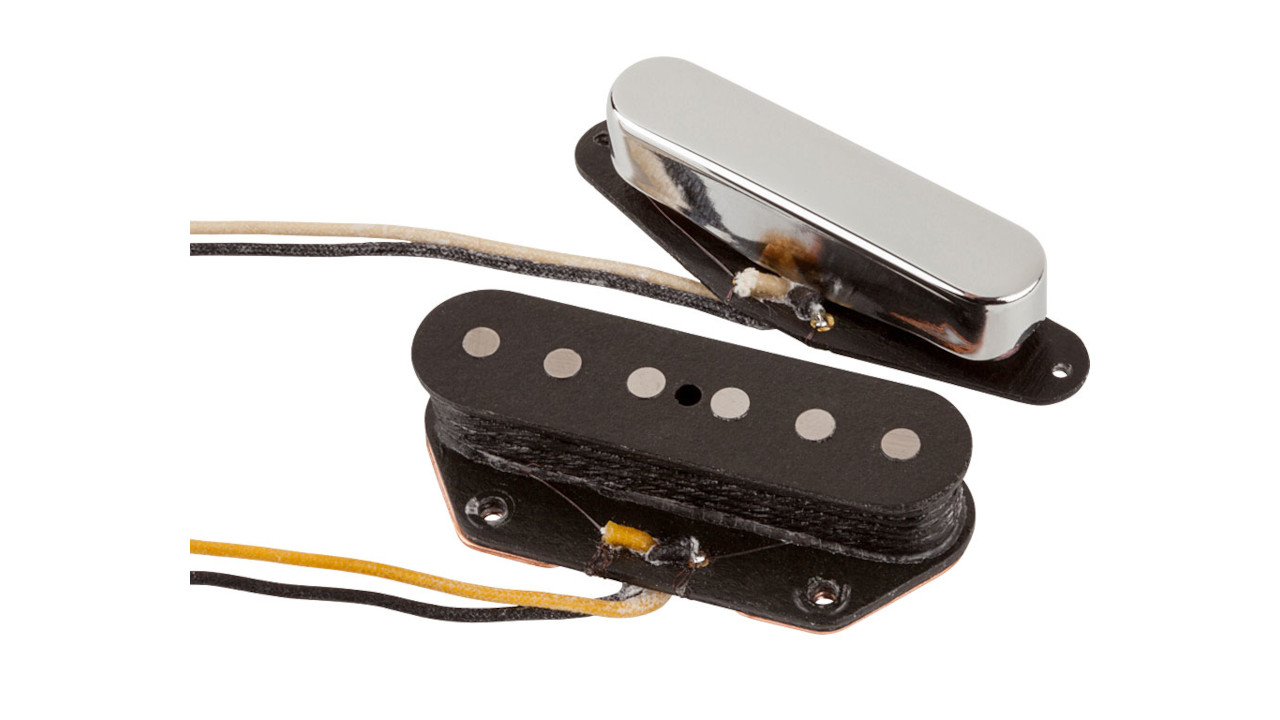
3. Fender Pure Vintage 52 pickups
Our expert review:
Specifications
Reasons to buy
Reasons to avoid
✅ Buy if you want classic vintage vibes: Based on the originals, the 52 pickups are the perfect choice for those looking to recreate that classic retro sound.
❌ Avoid if you want a more modern twist to your playing: Vintage by name, vintage by nature, so you're not going to get a more modern tone with these.
These pickups are proof that you don’t need to spend tens of thousands on an original vintage Telecaster to get that classic old-school sound. Made by the company that invented the guitar in the first place, the Fender Pure Vintage 52 Telecaster pickups are based on original pickups to give you an authentically vintage tone.
Expect plenty of mid-range, snap, clarity and articulation while retaining a smooth and strong low end. With everything turned up, you can easily get the classic Telecaster twang should you want it, though rolling off on the tone can mellow it out a little. Whether you’re playing clean or with gain, you’ll still get great note definition making it perfect for rhythm and lead players.
There really isn’t much more to say other than if you’re seeking that hallowed early Telecaster sound, then these pickups are one of the best ways to get there.
Best versatility
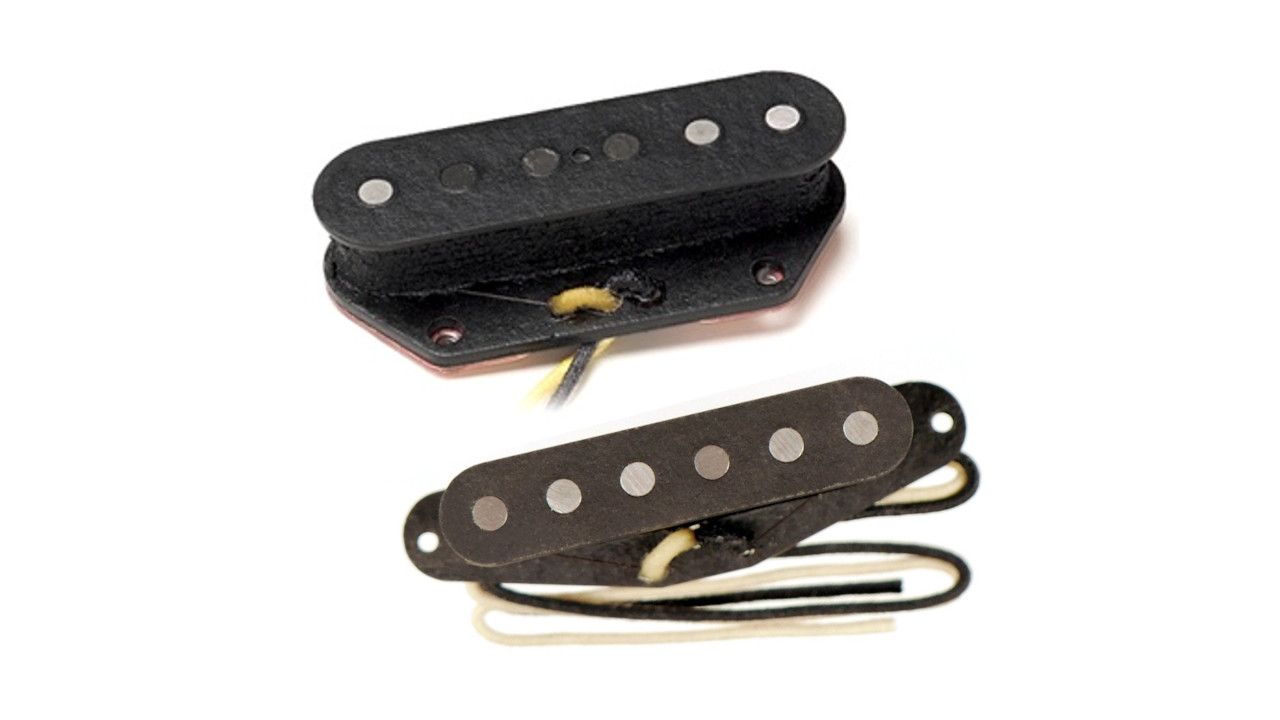
4. Fender Twisted Tele pickups
Our expert review:
Specifications
Reasons to buy
Reasons to avoid
✅ Buy if you want a nice touch of Strat: OK, so the Fender Twisted Tele pickups won't turn your Tele into a Strat, but they will give it a Strat-shaped sonic edge.
❌ Avoid if you just want a pure Tele tone: If you're not interested in even slightly replicating a Strat, then these aren't the pickups for you.
If you’ve ever wanted to infuse your Telecaster with a little of the Strat’s sonic profile, then you can do just that with the Fender Twisted Tele pickups. It’s not going to instantly transform your Tele into a Strat, but there’s definitely something different going on here, especially with the neck pickup.
The bridge has a little more punch and a darker mid-range, ultimately resulting in a slightly warmer sound. It’s got a vintage vibe about it and it works perfectly for blues and rock. You can still get some Tele bite and twang out of it, but it’s less pronounced.
The neck pickup is a little more like a Strat, with more airiness, brightness and openness to the sound. They’re also fairly hot pickups so these will drive a tube amp very nicely.
Best humbucker

5. Seymour Duncan Little '59 Tele
Our expert review:
Specifications
Reasons to buy
Reasons to avoid
✅ Buy if you want huge humbucker tones: These pickups deliver an even tone, are handmade and are amazing value for money if you want to add a humbucker tone.
❌ Avoid if you're just after a straightforward Tele tone: Like the Fender Twisted Tele pickups above, don't buy these if you want a traditional Tele sound.
If you're not a massive fan of single coils but still love your Tele, the Seymour Duncan Little '59 Tele delivers huge humbucker tones in a pickup that still fits into a regular Tele bridge position. As with all Seymour Duncan pickups they're handmade, and deliver fantastic quality and value for money.
Getting you scarily cross to the holy grail PAF tone, you'll find these pickups deliver a nice and even tone. There's a slight midrange scoop, which is to be expected if you know your PAFs, but it's an overall full-bodied sound for your Tele.
For American-made Telecasters the Little '59 should be a drop-in replacement, if you have a MIM or Squier Tele, then you may need to rout a little to get it to fit. It shouldn't be a huge amount of work, but something to look out for if you're getting yours for a non-MIA Telecaster.
Best budget
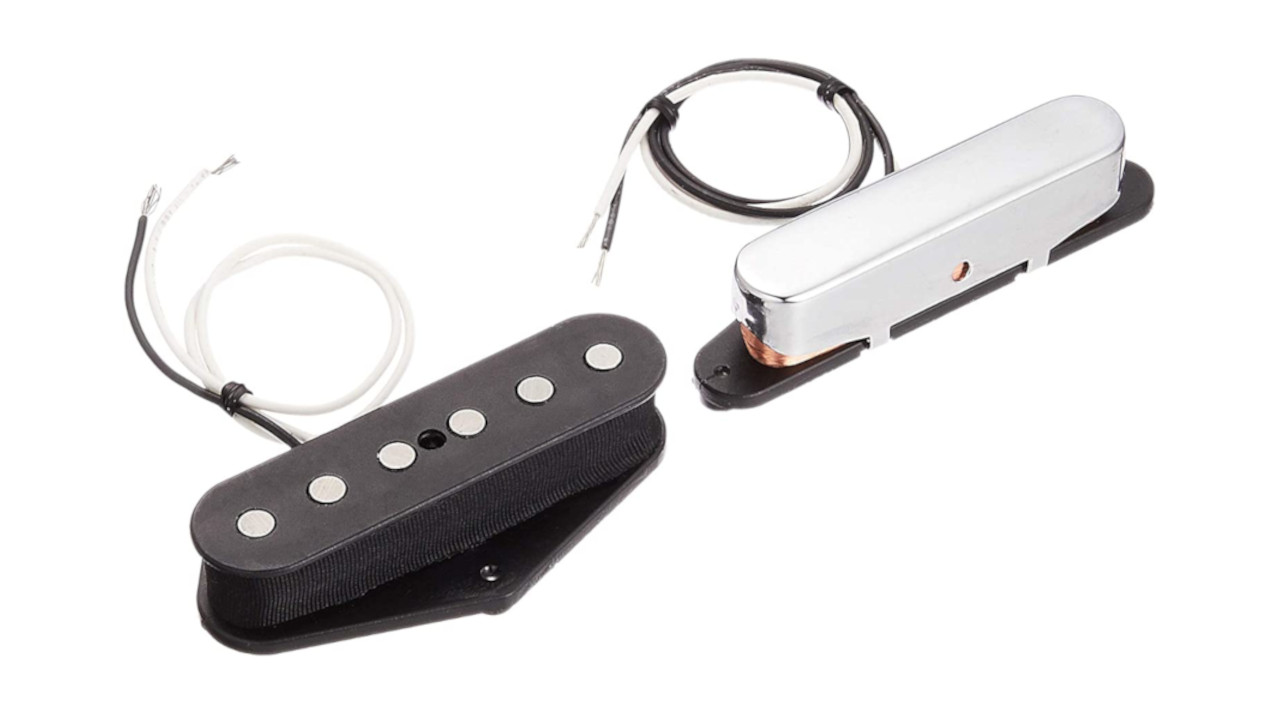
6. Fender Tex-Mex
Our expert review:
Specifications
Reasons to buy
Reasons to avoid
✅ Buy if you want bright-sounding pickups for less: The Fender Tex-Mex offer lively, mid-range sound and are a top option for players on a budget.
❌ Avoid if you want a mellow tone: These pickups have a bit of bright bite to them, so if you're looking for more gentle-sounding pickups, look elsewhere.
These are bright, hot and aggressive sounding pickups. Rest assured, they’ll clean up nicely, giving you clean and glassy tones, but they’ll also push the front end of an amp really well. These pickups are overwound, really lively and have a great mid-range snarl. With Alnico V magnets, they’re very focussed and offer great playing dynamics too.
Of course, in the neck position, you’ve got plenty of mellow warmth, but still lots of clarity and sparkle in the top end. They’re great for any type of music, and really allow your guitar to cut through a mix, both in live and recording scenarios. They’re also really well priced, and are made by Fender themselves.
More options...
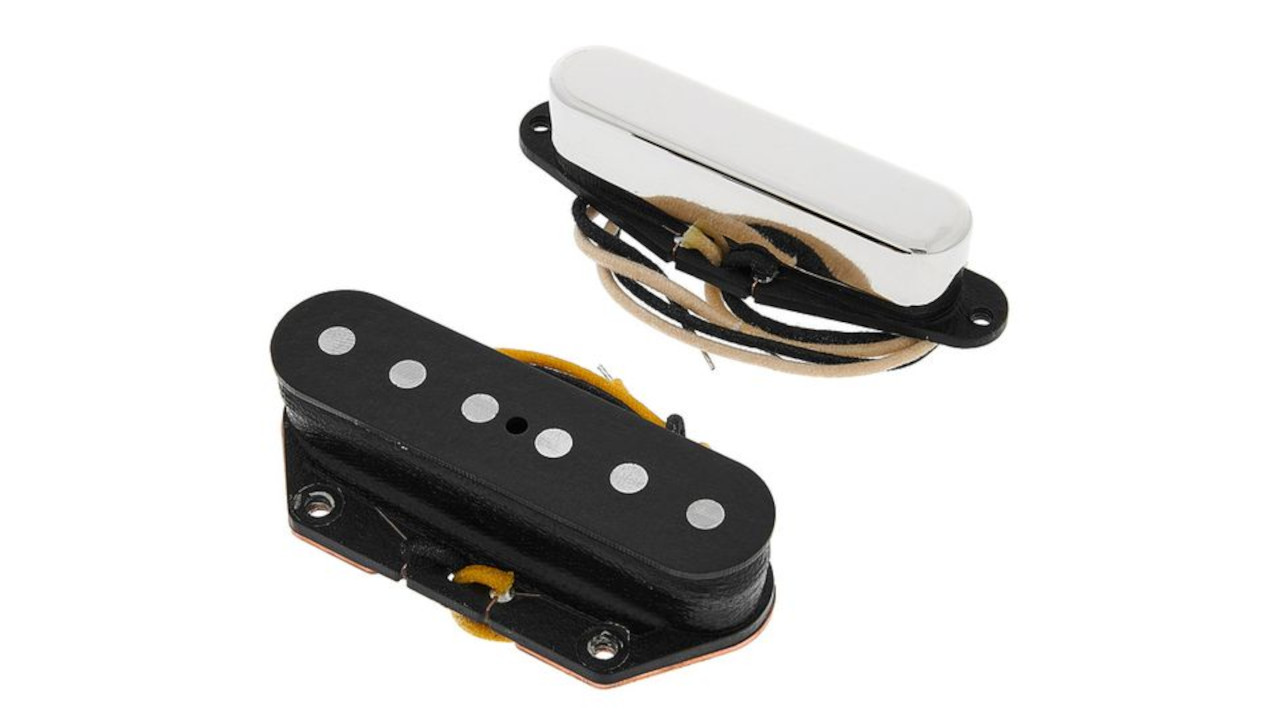
7. Lollar Special T pickups
Our expert review:
Specifications
Reasons to buy
Reasons to avoid
✅ Buy if you want classic 50s tones with a modern edge: The Lollar Special T pickups are based on the 50s pickups but throw a bit of modern balance into the mix.
❌ Avoid if you want a more modern vibe: These pickups offer a neat retro performance, but to take your sound into the future, look elsewhere.
Lollar make some superb pickups in various styles and the Special T is no exception. It’s based on the 50s pickups, though they have made a few adjustments to make them slightly more usable for modern players.
The top end has been slightly tamed which makes them nicely balanced. They’re lovely and punchy in the mids with a strong low end. You’ve still got top end clarity but they’re not quite as shrill as some Telecaster pickups can be. They are also a touch hotter than a true 50s pickup, so if you’re straying into rock and hard rock territories, then these might suit better.
They’ll clean up nicely for sure, and they’re very dynamic, responding to your touch beautifully, but if you want something that can rip through riffs and solos without peaking too much in the upper frequencies, then the Lollar Special Ts might be the best Telecaster pickups for you.
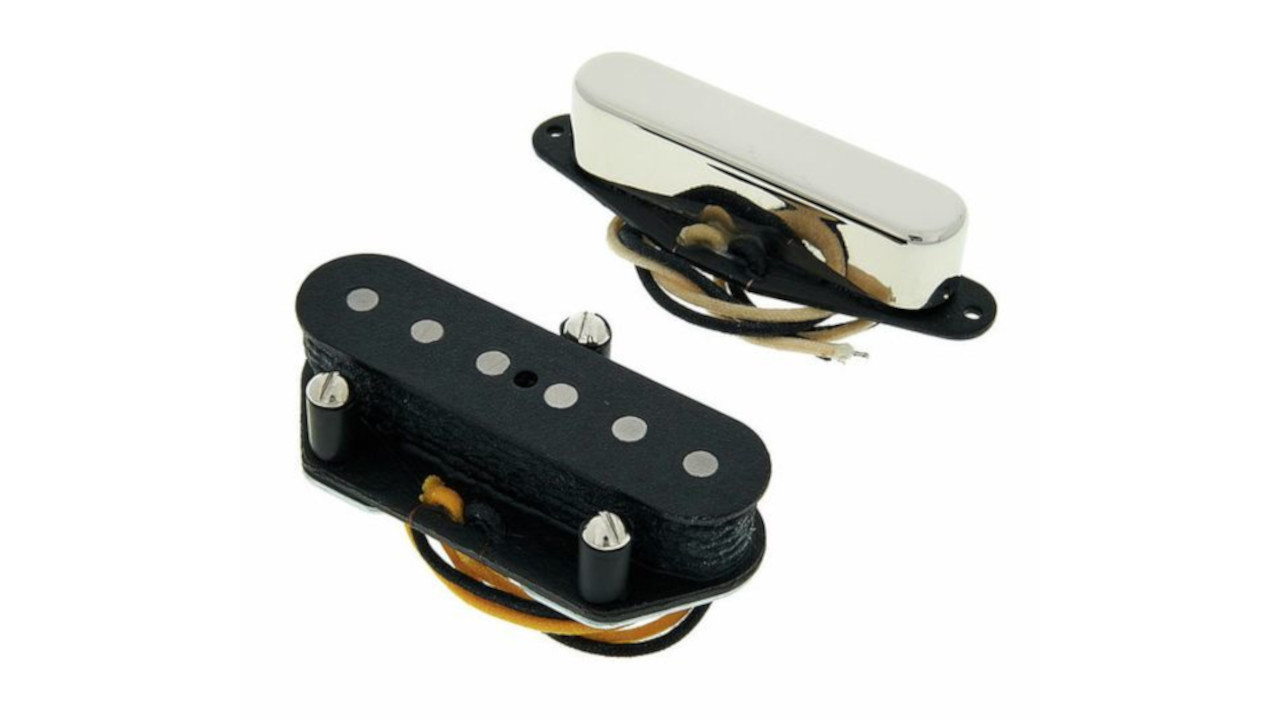
8. Bare Knuckle Blackguard Flat 50 pickups
Our expert review:
Specifications
Reasons to buy
Reasons to avoid
✅ Buy if you want versatile pickups for a range of playing styles: The Bare Knuckle Blackguard Flat 50s offer a dynamic sound that works just as well for jazz as they do for rock.
❌ Avoid if you want to give your playing a more metal edge: Versatile as they are, if you want something just for all-out metal riffing, you should choose something a bit more modern sounding.
Simply because of their sheer versatility, the Bare Knuckle Blackguard Flat 50s can be deemed some of the best Telecaster pickups out there.
This pickup set will perform incredibly well regardless of the style of music you play; from jazz, rock and blues, to metal, country, pop and more. They’re really dynamic, and a ‘hot vintage’ kind of output; they’ve got a really nice bite and punch that can push a tube amp but still clean up beautifully.
Like many of the best Tele pickups, these are based on some of the legendary 50s models, though these have a higher output. You can revel in classic Tele tones, but push them into slightly more throaty, mid-heavy aggression when you want to.
The neck pickup is clear, smooth and warm, with none of the muddiness that sometimes plagues them. Overall, a great vintage Tele pickup set, with a little more attitude.
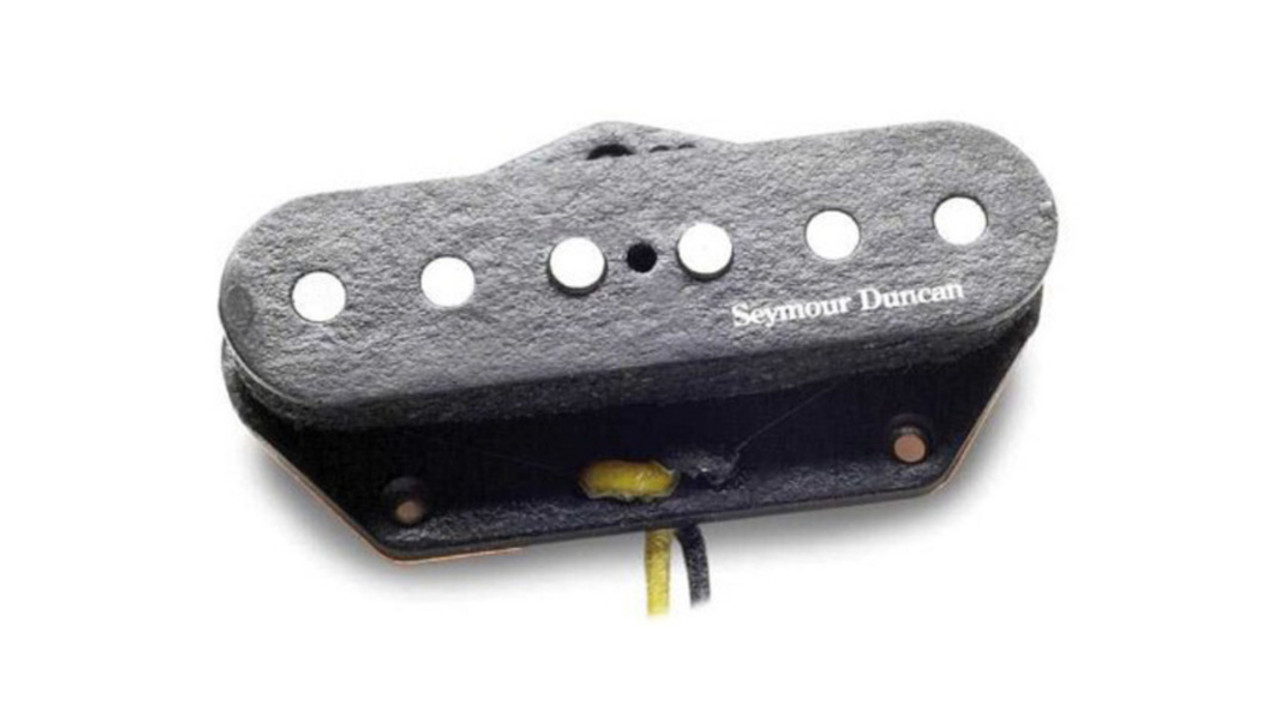
9. Seymour Duncan APTL-3JD
Our expert review:
Specifications
Reasons to buy
Reasons to avoid
✅ Buy if you want to give your playing a more mellow edge: Based on the 52 Tele, the Seymour Duncan APTL-3JD will give you a nice mid-range punch for your money.
❌ Avoid if you want your playing to have a bit more bite: These pickups suit a more laid-back style of playing, so bear that in mind when choosing your next set of pickups.
This is the signature bridge pickup from one of the best and most underrated Tele players of all time, Jerry Donahue. He has played on countless hit records and had a stint with folk rock legends Fairport Convention. Like many others, Jerry loved the sound of a 52 Tele, which is what this bridge pickup is based on.
It’s very musical and sweet sounding, while the top end is mellow and not over-bearing. It’s warm with a nice mid-range punch. Like those early 50s models, it’s got plenty of attitude and as well as the twang and articulation that Tele bridge pickups are known for, this will push your tube amp beautifully into a warm organic overdrive when you want it to, with plenty of sustain. It’s worth noting that the two middle poles are raised which make it perfect for Teles with a vintage neck radius,
There is only the bridge pickup available, but Seymour Duncan recommend pairing this with their Alnico II Pro Tele neck pickup.
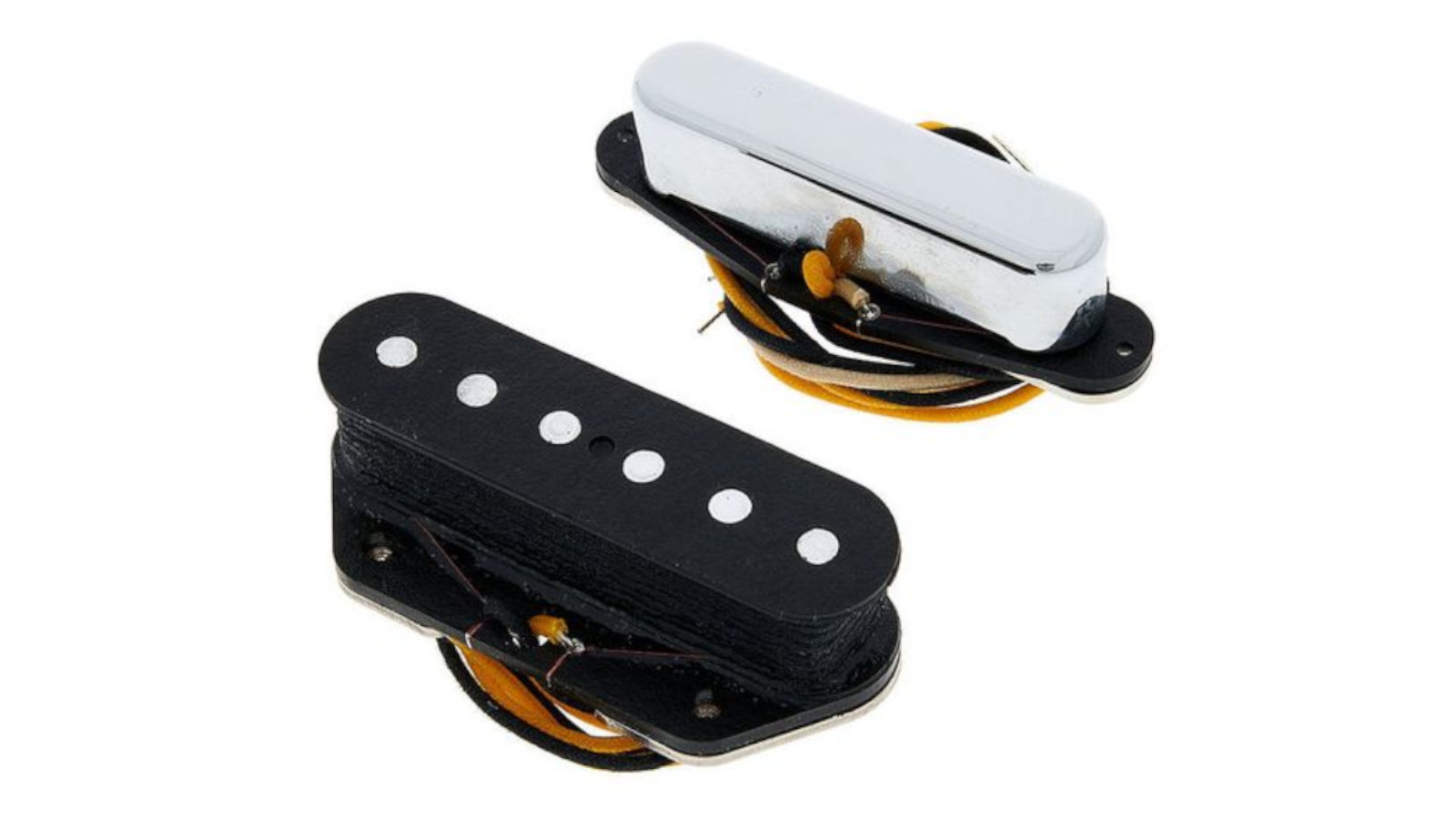
10. Mojotone Broadcaster Quiet Coil Tele Pickups
Our expert review:
Specifications
Reasons to buy
Reasons to avoid
✅ Buy if you want a bit of old school style: There's plenty of mid-range to be found here, with clean, crisp low-end. Ideal for blues and country.
❌ Avoid if you want your Tele to rock out: There might not be enough modern tones here for some players who play rock or metal.
Mojotone’s Broadcaster Quiet Coil pickups pay tribute to one of the most significant moments in guitar history. The Broadcaster was Leo Fender’s first-ever two-pickup electric guitar, introduced in late 1950. It was quickly renamed the Telecaster due to a trademark dispute with Gretsch, but in its short run, the Broadcaster laid the foundation for everything that followed.
The Mojotone Broadcaster Quiet Coils capture that raw, punchy character of those early Blackguard guitars – thick and full-bodied with plenty of midrange bite and a tight, controlled low end.
The highs are crisp without being harsh, making these pickups perfect for anything from blues and rock to country twang.
And while they deliver that unmistakable vintage tone, they do so without the usual hum. Unlike traditional single coils, these are fully noise-free, yet they do not rely on stacked coils or active electronics – meaning no extra batteries or complicated wiring.
The result is a pure Broadcaster-style tone with the clarity and touch response you would expect from a great set of Tele pickups.
FAQs
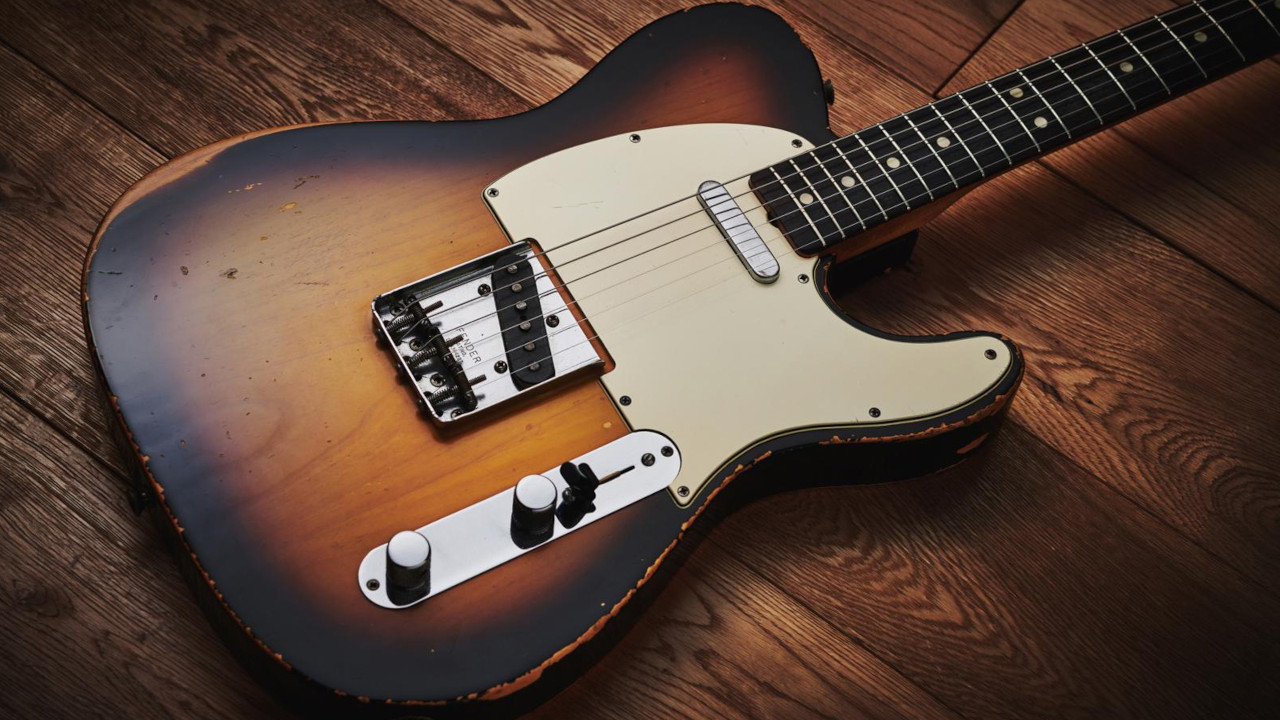
What is the sound of a Tele pickup?
When talking about the best Tele pickups, you’ll often hear the term ‘Blackguard’ – this simply refers to any first generation Telecaster made up to 1954. Conversely, a ‘Whiteguard’ is one that’s made from 1954 onwards. How much difference there is in tone between those two is widely debated, as Fender’s pickup making process wasn’t particularly consistent at the time.
It’s worth remembering that there are multiple factors that contribute to the sound that you end up hearing. The materials used, the strength of the magnets, wire gauge and number of turns all come together to create your guitar’s tone, and Leo was known for basically using whatever he had lying around!
What we can say though is that those early Tele pickups tend to be fairly punchy, with strong lows, present mids and a lovely, sparkly high end. You also get a lot of note separation and great balance because of how the pickups were made at the time. Many pickup producers offer very similar specs to these early Tele pickups meaning you can get that ‘Blackguard sound’ (if one exists), for a lot less than what a real one would cost you. When people refer to the ‘Whiteguard sound’, they’ll usually mean that they’re a little cleaner, brighter, and twangier.
What is pickup output?
One factor that many people consider when changing pickups is output. A few things can affect the output – the baseplate material on the Tele bridge pickup is one, as is the type of magnet used in the pickup, and the number of turns of wire around that magnet. Many of these can also alter the EQ response of the pickup too.
The higher the output, the more signal you’re putting into your amp. This affects the tone, but also changes how and when this will push your amp into overdrive (if using a tube amp). A hotter pickup (one with a higher output) will break up sooner, as it’s making those tubes work a little harder, whereas a lower output pickup will stay cleaner for longer.
Do I need a full set?
Many of the best Telecaster pickups are available in sets, meaning you get both the neck and bridge pickup. If you’re after a complete tonal overhaul, then a set is probably best as you’re going to get new sounds in all three pickup switch positions. However, if you’re already happy with the sounds you’re getting in one position, then consider only swapping out the pickup you don’t like. Just remember that you’ll also have a slightly different tone in the middle position when you blend the two.
Will any Tele pickup work on my guitar?
Before pulling the trigger on a new set of pickups, it is worth double-checking they will actually fit your guitar. Most Tele pickups stick to standard sizing, but there are always exceptions – especially with vintage reissues or certain aftermarket brands.
If you are swapping out just one pickup, make sure it’s in phase with your existing one, or you might end up with that weird, thin, out-of-phase sound in the middle position.
How hard is it to install new pickups?
Changing Tele pickups isn’t rocket science, but in most cases, it can involve some soldering. If you are handy with a soldering iron and can follow a wiring diagram, you will probably be fine.
Always take your time, read the included instructions and check out YouTube for any handy tutorials. Ultimately, if you don’t feel up to it, a guitar tech can do it in no time, and it is worth the small cost – especially if you are also upgrading pots or caps to get the best out of your new pickups.
How we test
Testing pickups comes down to one core aspect for us, and that's the sound. Getting them installed is admittedly part of the process, but as you can (and probably should if you're inexperienced) outsource this to an expert guitar tech, what we're looking for when testing is that change and improvement in tone.
We always start with the bridge pickup in our testing, that most famous of tones. Known widely as the Tele 'twang', a good Tele bridge pickup should deliver a lot of treble, with a biting tone that cuts through a mix easily. It shouldn't be thin either, providing enough body to ensure a full and fat tone.
Conversely the neck pickup of a Telecaster is the polar opposite of the bridge. Here we want a dark and warm tonality that lends itself well to clean picked arpeggios and hard riffing alike. What we don't want is any woolyness obscuring the articulation of the notes, which you'll often find on cheaper Tele pickups.
We'll test the pickup on their own, in the mix with a band, and even during recording to determine their suitability for the task. This ensures we get a good measure of the pickups tonal qualities in a variety of situations, which allows us to make a judgement call as to whether or not it's a good fit for our guides.
Read more on how we test gear here at Guitar Player.
Meet the experts

After spending a decade in music retail, Richard is now a freelance writer for MusicRadar, Guitar Player, Guitar World and Reverb, specialising in electric and acoustic guitars, bass, and almost anything else you can make a tune with. When his head’s not buried in the best of modern and vintage gear, Richard runs a small company helping musicians with songwriting, production and performance, and plays bass in an alt-rock band. Otherwise, you'll probably find him out walking the dog!

Matt has been recording bands since the mid-noughties, cutting his teeth with an M-Audio M-Track 2 and a copy of Cubase on Windows XP. Since then he's used countless audio interfaces to record music for bands across the UK, covering everything from djent to jazz. As a MusicRadar writer, Matt has reviewed 15 audio interfaces in the past year alone, and over 50 different products including guitars, amps, and pedals. Before becoming a writer, he spent five years in the music retail industry working for Dawsons Music and Northwest Guitars, providing expert advice to musicians. He’s currently studying Music Production at Spirit Studios in Manchester, UK.

Ross has been a music lover and guitar player since the age of 8. He has spent the five years since graduating from university working in music retail, selling guitars, amps and more. Ross is particularly interested in electric guitars, pedals and amplifiers and his current rig includes a trusty 2009 American Standard Stratocaster and Vox AC30S1 with a few Walrus Audio and Way Huge pedals in between.
Latest updates
04/17/25: The guide has been updated to include the Mojotone Broadcaster Quiet Coil Tele Pickups, while all the products featured in the guide now have added "At a glance" sections. The FAQs have now been expanded with more information, while a "Meet the experts" section has also been included.
Read more
You can trust Guitar Player.
- Fender Stratocaster Vs Telecaster: Which Is Right For You?
- Best Electric Guitars: Fine Electrics For Beginner To Pro Players
- Freshen up your tone with the best electric guitar strings
- Best Electric Guitars Under $500: Budget Axes To Suit All Players
- Nail the tone for cheaper with the best guitar amps under $500
All the latest guitar news, interviews, lessons, reviews, deals and more, direct to your inbox!
After spending a decade in music retail, I’m now a freelance writer for Guitar Player, Guitar World, MusicRadar and Reverb, specializing in electric and acoustic guitars bass, and almost anything else you can make a tune with. When my head’s not buried in the best of modern and vintage gear, I run a small company helping musicians with songwriting, production and performance, and I play bass in an alt-rock band.
- Ross Holder
- Matt McCrackenJunior Deals Writer

